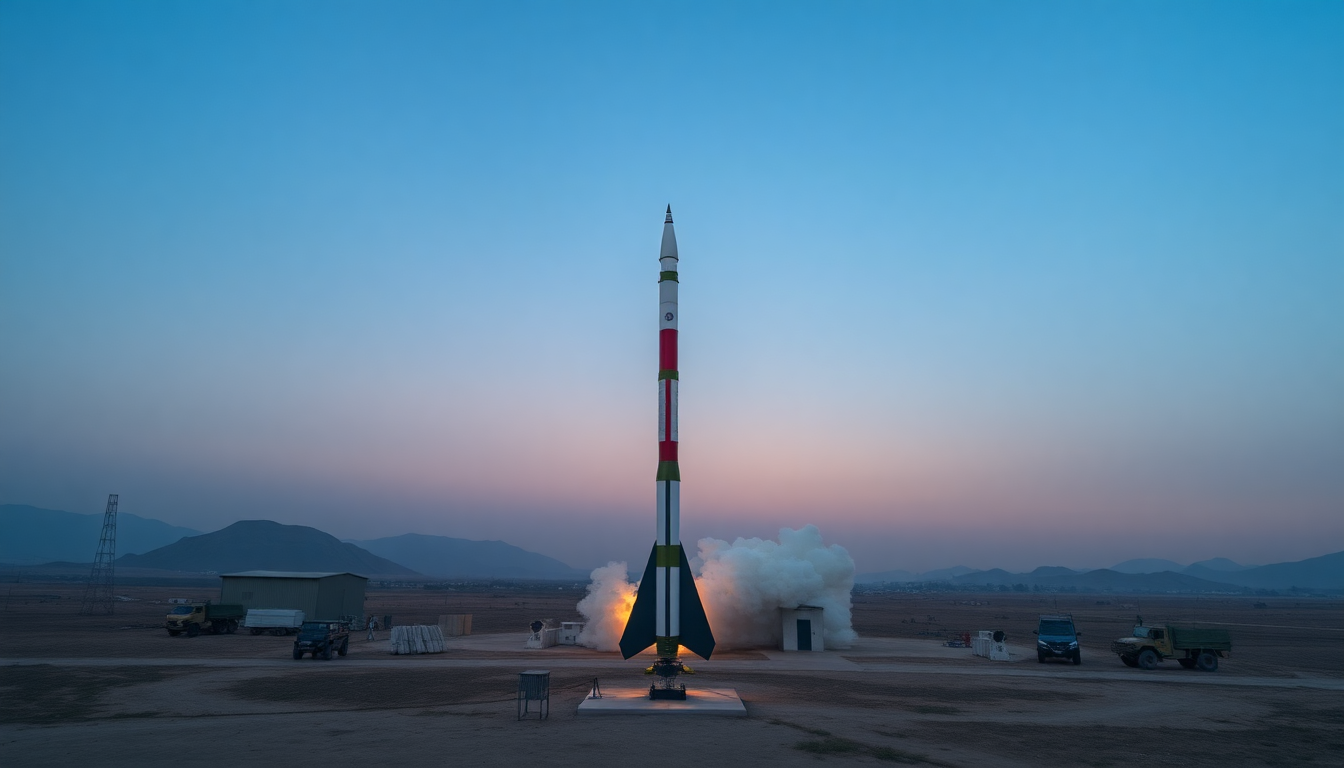Table of Contents
The missile race in South Asia is heating up, particularly between India and Pakistan. Recent developments, like India’s successful test of the Agni-V missile, don’t just highlight a fierce competition between these two nuclear-armed neighbors; they also reveal larger regional dynamics involving China. So, what does this mean for the delicate balance of power in the area? Let’s dive into the details of this arms race, exploring the strategic motivations behind each country’s missile advancements and what they could mean for regional security.
The Current Landscape of Missile Developments
On August 20, India made headlines by successfully testing its Agni-V missile, which is an intermediate-range ballistic missile with some impressive specs. At 17.5 meters long and weighing around 50,000 kg, the Agni-V can hit targets over 5,000 kilometers away at hypersonic speeds. That makes it one of the fastest missiles in the world! This test showcases India’s determination to boost its missile capabilities amid ongoing tensions with Pakistan and a complicated relationship with China.
But it’s not just India making moves. Just a week before India’s test, Pakistan announced the formation of a new Army Rocket Force Command (ARFC). Analysts believe this is a direct response to vulnerabilities revealed during recent conflicts. This shift signals that Pakistan is keen to strengthen its defenses against perceived threats from India. Can you see the chessboard unfolding?
Experts are saying that India’s missile advancements, especially the Agni-V, aren’t just aimed at Pakistan. They’re also a strategic message to China. With its range covering much of Asia and parts of Europe, the Agni-V is positioning itself as a serious deterrent against potential adversaries. How does that change the game?
Analyzing Regional Tensions and Strategic Messaging
The timing of the Agni-V test is pretty intriguing, especially since it coincides with Indian Prime Minister Narendra Modi’s upcoming visit to China for the Shanghai Cooperation Organisation (SCO) summit. After years of strained relations over border disputes, the two countries have been engaging in cautious diplomacy. But let’s not forget the external pressures, like trade tensions with the United States. Even with this thaw, India still views China as a primary threat, which undoubtedly influences its missile development strategy.
Looking back, India’s military actions during the May skirmish with Pakistan showcased a significant leap in missile technology, especially with the BrahMos cruise missile. Its low altitude and high speed make it effective at slipping through enemy defenses—talk about a game changer!
Analysts suggest that the Agni-V test isn’t just a reaction to Pakistan’s military moves. Instead, it represents India’s intent to establish its capabilities in the face of Chinese expansionism. With the ongoing standoff along the disputed Himalayan border, India feels the urgency to enhance its missile capabilities to ensure it has a credible deterrent against potential threats. Does this set the stage for a more aggressive posture?
Future Implications and Strategic Forecasts
As both nations ramp up their missile arsenals, the implications for regional stability are significant. India’s missile development program is shifting towards long-range capabilities, with plans for the Agni-VI, which is expected to exceed a staggering 10,000 kilometers in range. This could enable India to project power well beyond its borders, especially towards China.
On the flip side, Pakistan’s missile capabilities remain largely defensive, focusing on countering India’s advancements. The recent introduction of the Fatah-4 cruise missile shows Pakistan’s intent to maintain parity with India, even as it faces its own strategic challenges. How long can this cat-and-mouse game continue?
The contrasting priorities of India and Pakistan highlight the complexities of their security dynamics. While India aims to establish itself as a major global player, Pakistan is primarily focused on protecting its territorial integrity. This difference in approach might magnify tensions in the region as both countries continue to invest heavily in their military capabilities.
In conclusion, the missile race in South Asia encapsulates the region’s intricate geopolitical landscape. As India and Pakistan navigate their security dilemmas, the risk of miscalculation remains high. It’s crucial for the international community to keep a close eye on these developments, as the fallout from this arms race could have implications that reach far beyond South Asia. What do you think will happen next?


